In Vedic Astrology, Rahu and Ketu are the important Lunar Nodes. Unlike the seven visible planets, Grahas in Sanskrit, they are massless yet potent mathematical points in space, sometimes referred to as the shadow planets. Our solar system is structured such that it...
New to Yoga
Practices
Yoga in Your Daily Life
Yoga Beyond Asana
Sister Sciences »
Our Sangha »
Yoga Beyond Asana
Navrati: The Nine Nights of the Goddesses
October 9th - 18th, 2018 by Gwen Burdick Navratri, a nine night-long celebration of the Divine Feminine, occurs every year on the New Moon in the Vedic month of Ashwin (usually our September, but not always) near the autumnal equinox. Worship of the Goddesses Durga,...
Shreem, Shreem, Shreem
The technology through which Spirit takes form as the manifest world commences with sound vibration traveling through the Akashic realm of space. The shortest possible sound in Sanskrit, the ancient language of the Vedas, is the mono-syllabic sound or Beej Mantra. The...
The Vedic Trinity: Create, Sustain, Destroy
In the Vedic tradition, the ancient root of yogic philosophy, the concept of God or Supreme Reality is understood in a three-fold manner. The triple function of God, Trimurti in Sanskrit, is expressed as Brahma the creator, Vishnu the sustainer and Shiva the...
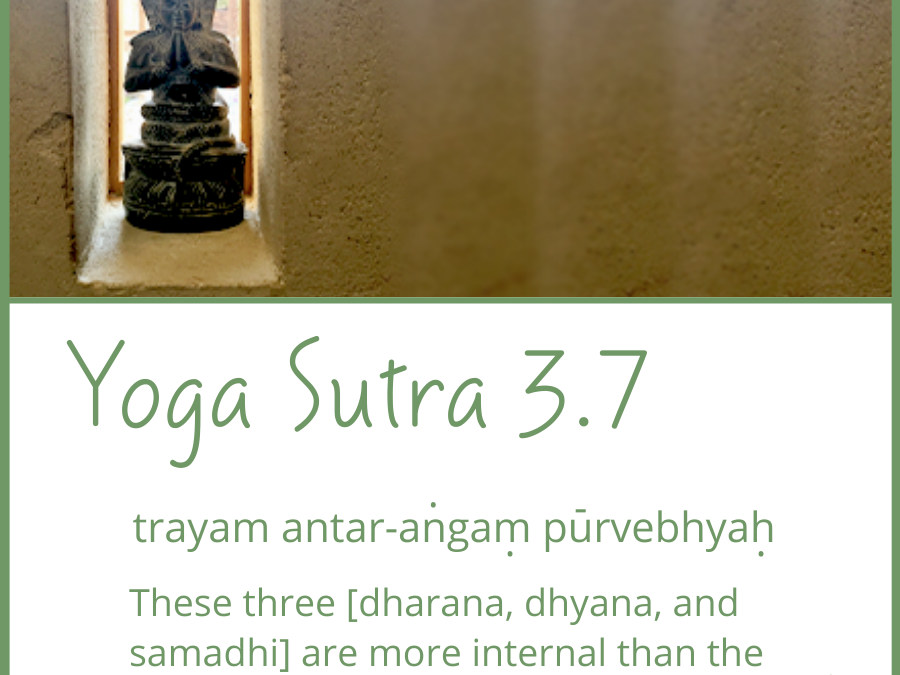
Exploring the Yoga Sutras of Patanjali: Sutra 3.7
Our most recent exploration of the yoga sutras ends with sutra 3.7, which states, trayam antarangam purvebhyah: These three [dharana, dhyana, and samadhi] are more internal than the preceding limbs. Following last month’s sutra, also focused on the last three...
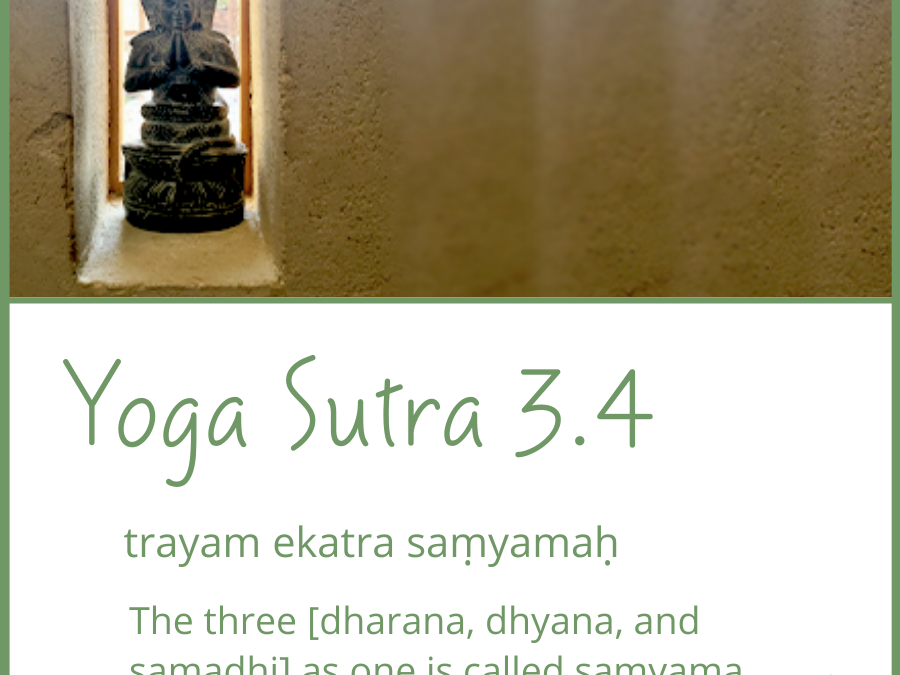
Exploring the Yoga Sutras of Patanjali: Sutra 3.4
Yoga sutra 3.4 states: trayam ekatra samyama: The three [dharana, dhyana, and samadhi] as one is called samyama. The last three limbs of the eight limbs of yoga are considered those limbs that happen naturally, whereas the first five limbs are actively...
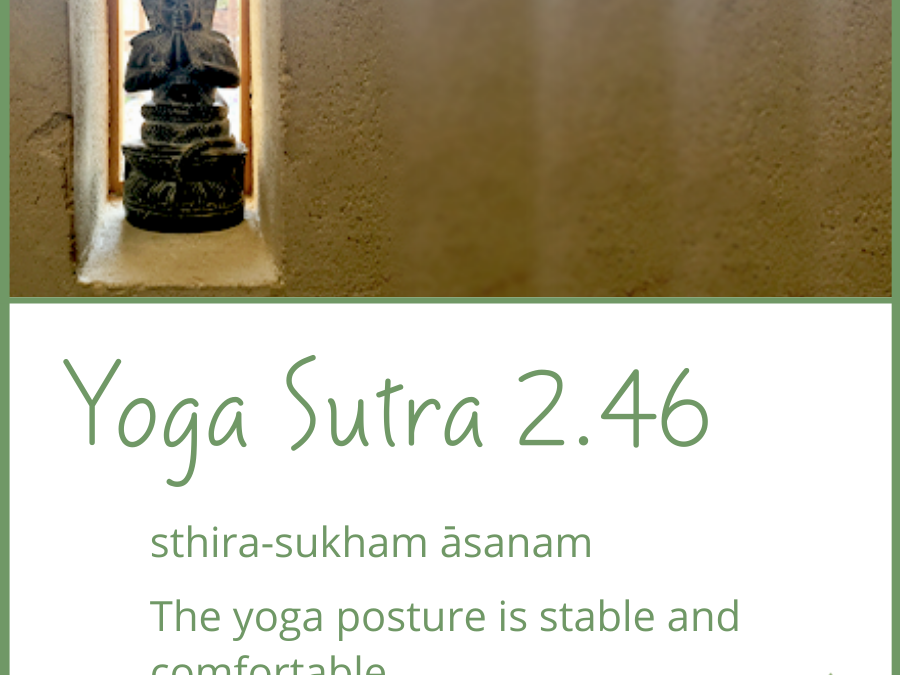
Exploring the Yoga Sutras of Patanjali: Sutra 2.46
Yoga sutra 2.46 states, sthira sukham asanam: The posture for yoga meditation should be steady, stable, and comfortable. You may have heard this yoga sutra in class—at least in its English translation. The yoga postures are to be done with steadiness and ease....
The Vedic World View
"It is quite possible that India is the real world, and that the white man lives in a madhouse of abstractions." Carl Jung (after a visit to India in 1938) As our study and practice of the Yogic sciences and philosophies deepen, it becomes increasingly important to...
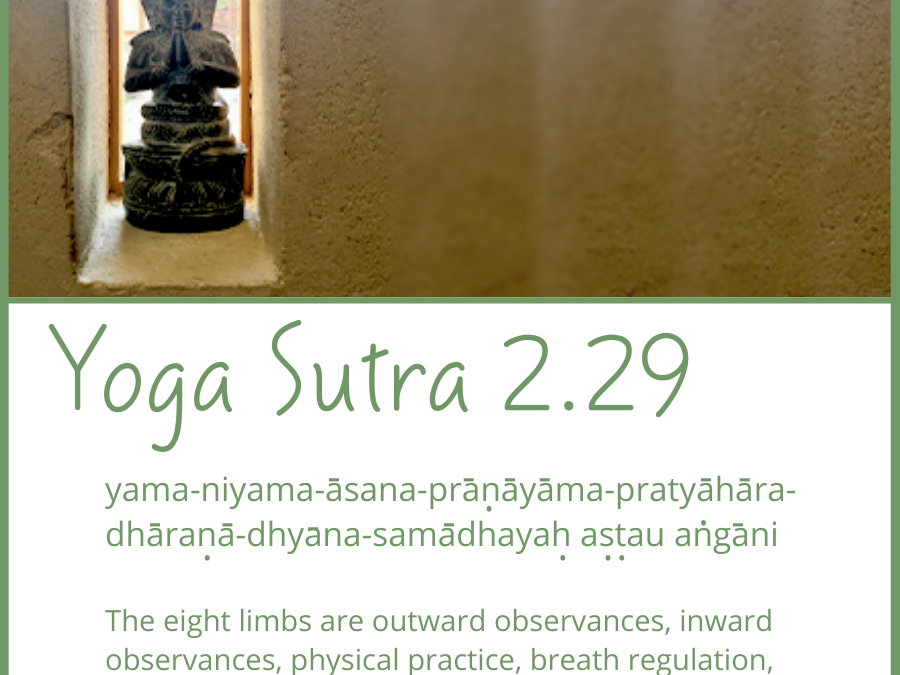
Exploring The Yoga Sutras of Patanjali: Sutra 2.29
Yoga sutra 2.29 states, Yama niyamasana pranayama pratyahara dharana dhyana samadhi astau angani: The eight limbs of yoga are: yama (self-regulation), niyama (observances), asana (posture), pranayama (breath control), pratyahara (withdrawal of senses), dharana...
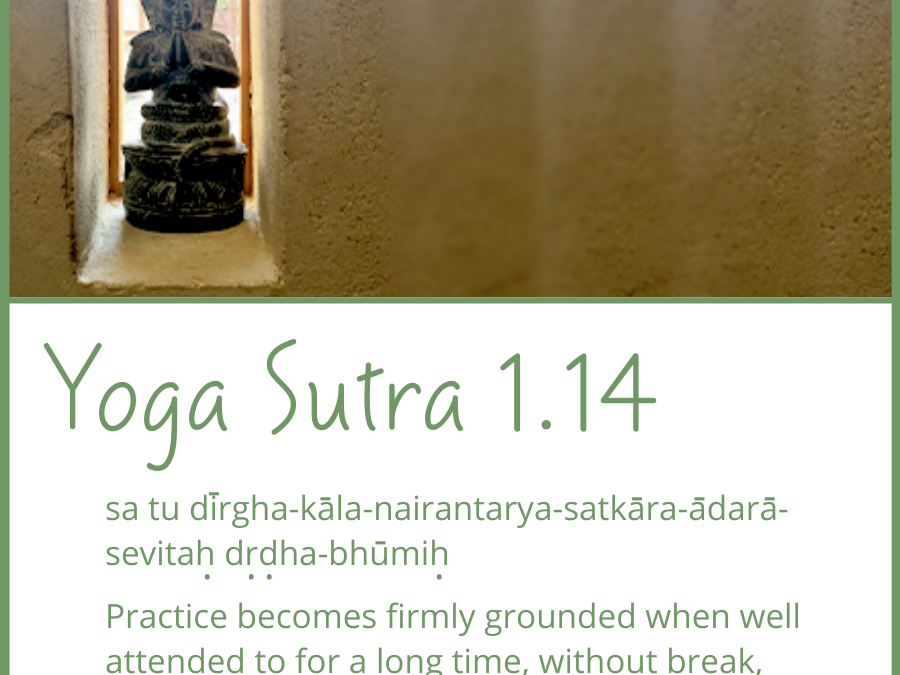
Exploring The Yoga Sutras of Patanjali: Sutra 1.14
Skipping ahead a few sutras to yoga sutra 1.14, which states, sa tu dirghakala nairantarya satkarasevito drdhabhumih: Practice that is done for a long time, without break and with sincere devotion becomes a firmly rooted, stable, and solid foundation. This is an...

The Maha Bhutas: Exploring the Five Great Elements
According to Vedic science, when Spirit (Purusha in Sanskrit) takes form as life, it is called Prakriti. Prakriti is composed of five elements, known as the Maha Bhutas, which range from the finest to the grossest: space, air, fire, water, and earth. In Sanskrit, they are called Akash, Vayu, Agni, Jal, and Prithvi, respectively. Every individual is a microcosm of nature and, as such, contains all five elements. Let us explore each of them.
The Three Gunas: Tamas, Rajas and Sattva
The word Guna means "that which binds" in Sanskrit. According to Vedic science, all matter and energy that make up the manifest world consists of the three gunas in different quantities. They describe the qualities of nature and states of awareness, and are likened to...
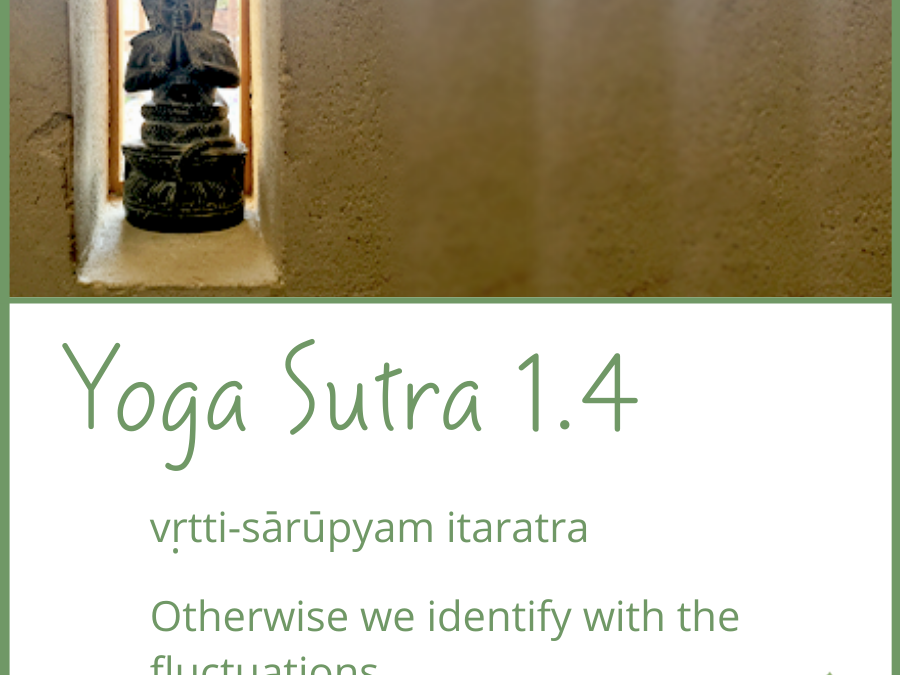
Exploring The Yoga Sutras of Patanjali: Sutra 1.4
Building on the first three sutras, yoga sutra 1.4 states, Vritti sarupyam itaratra: When one is not in Self-realization, the Seer takes on the identity of the fluctuations of mind (thought patterns). That is, when we are wrapped up in our thoughts, unable to stay...
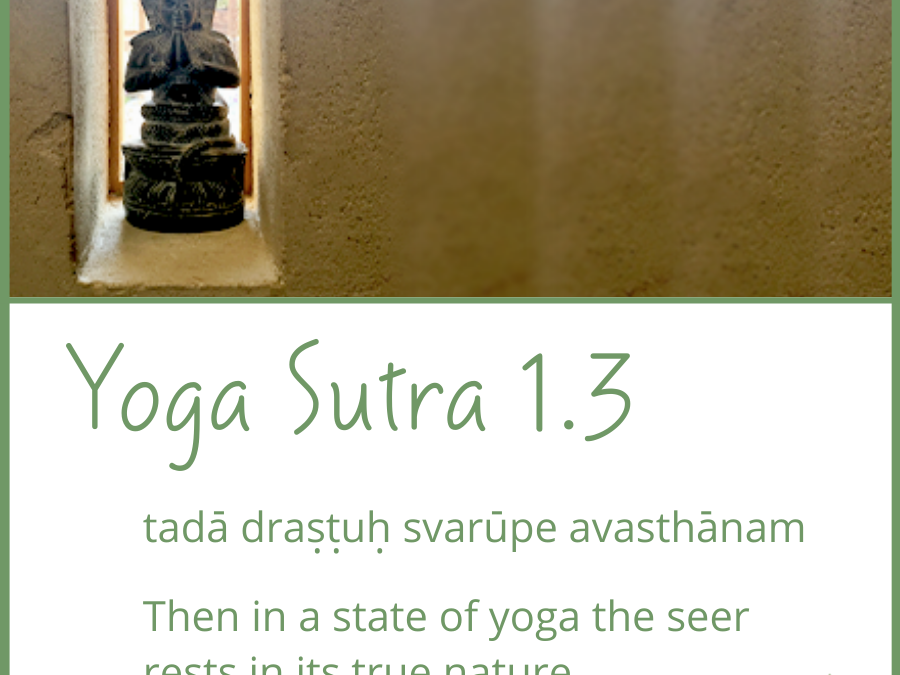
Exploring The Yoga Sutras of Patanjali: Sutra 1.3
Following up on yoga sutra 1.2 (essentially, yoga is the cessation of mind chatter), yoga sutra 1.3 states, Tada drashtuh svarupevasthanam: then the seer abides in itself, resting in its true nature, also known as self-realization. This sutra explains the...
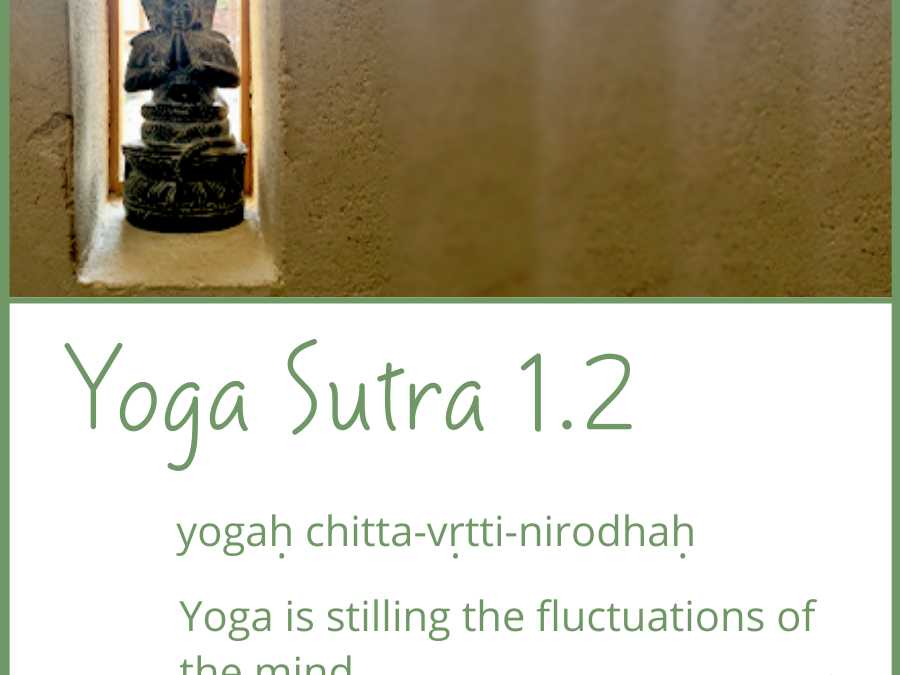
Exploring the Yoga Sutras of Patanjali: Sutra 1.2
In yoga sutra 1.2, the second sutra of book one, Patanjali lays out the definition and purpose of yoga. Yogas citta vrtti nirodhah: yoga is the cessation of the modifications, or fluctuations, of the mind. This sutra gets right to the heart of why we practice yoga.
Exploring the Myths of Asana—Savasana
At the end of a yoga asana practice comes what many find to be the best part of the practice—Savasana, or Corpse Pose. Often, Savasana is referred to as Final Resting Pose or Final Relaxation Pose, but at its essence, Savasana is about surrendering deeply to an energy...
Exploring the Myths of Asana—Siddhasana
Siddhasana, or Accomplished Pose, does not look like much from the outside, but the ability to hold this pose for long periods of time is known to be a marker of meditative excellence. In a sitting position, with the left heel placed against the groin, or perineum,...
Exploring the Myths of Asana—Balasana
Balasana, or Child’s Pose, is one of the most-loved yoga postures for the simple reason that it feels so good. The fact that it’s often taken after a difficult pose may even increase its appeal. Balasana is like a refuge. A breath of fresh air. A release. It’s where...
Exploring the Myths of Asana—Vasisthasana
Vasisthasana, or Side Plank Pose, is named after the great Indian sage Vasistha. The story begins with King Ram, who was an incarnation of Vishnu, one of three main Hindu gods responsible for the creation, maintenance, and destruction of the universe. Vishnu is...
A Practice for Cultivating Metta—Lovingkindness
In the Buddhist tradition, the practice of metta, or loving kindness, plays an important role. The ability to view other people and beings with benevolence is a strong value of this belief system. But in a world with so much violence, so many differing opinions, so...
